The collection Body Sculptures by Rebecca Horn made me think about a revolutionary Italian writer. I rediscovered the relativism of Luigi Pirandello by visiting Horn’s exhibition at the Tate Modern.
Ongoing performance reproduction
Inevitably we construct ourselves. Let me explain. I enter this house and immediately I become what I have to become, what I can become: I construct myself. That is, I present myself to you in a form suitable to the relationship I wish to achieve with you. And, of course, you do the same with me.
L. Pirandello, The Pleasure of Honesty, 1925
The relativistic concept proposed by the 1900s author, Luigi Pirandello, argues that we have a multi-faced personality shaped through different individual and cultural factors: our beliefs, the social structures we live in, the people or texts affecting us, etc. The Italian novelist speaks about a “mask”, a constructed modern identity, that we are forced to wear in the presence of other people. The mask helps us to interact with people, accomplishing their expectations and preventing us to be judged, and, at the same time, it armed individuals against what makes them feel vulnerable and unconfident. In this way, we are both protectors of ourselves and aggressors against the surrounding environment.
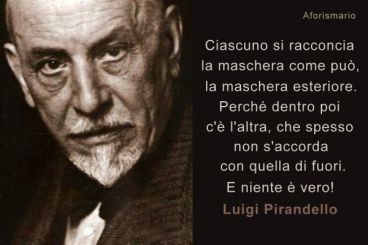
The German artist, Rebecca Horn, through the collection “body sculpture”, reminded me the dualist aspect of Pirandello’s mask. She plays with objects and different materials to both extend and protect her body. After having been diagnosed with a severe illness, she had to stay in bed for several months completely isolated, so started to draw wearable sculptures exploring extensions and limitations of human body. Once healed, the artist produced these objects, as constraints or protheses, made by wood, feather, fabric and plastic, creating participatory art performances.
The exhibition at Tate Modern hosts Horn’s body sculpture highlighting the artist’s intention of transforming the relationship between the individual and the surrounding space.
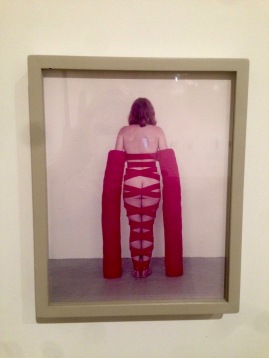
The body of the performer, entirely supported by two thick stumps wrapping her arms, enters a new spacial and physical dimension. She can’t move, seems paralyzed, but something is evolving on her body: during the performance, the more her arms got used to this particular harness the more she felt detached from her own body creating, instead, a sense of fusion between herself and the ground she was standing on. The artist has no more the same body, identity, now she is part of something new.
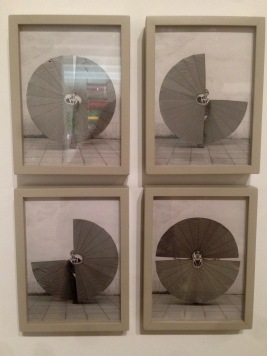
The artist here is able to swing the mechanical body fan as she wishes, deciding which part of her body showing to the viewer. This is what Pirandello describes as a common human attitude: according to the person we are relating to we act differently showing enhancing or hiding aspects of our personality.
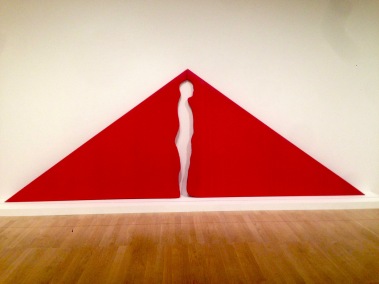
The wearer of the sculture here is the height of a triangle, that represents the geometric extension of human body into the space. The triangle connects the individuals with the landscape but also isolates and protects them from other people/observers.
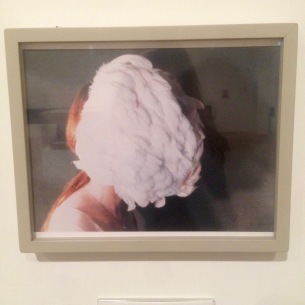
My favorite piece is the Cockatoo mask. The artist wears a feather mask: the one who stands before gently touches the mask that opens like the wings of a bird and encloses the heads of the two, isolating them together. For me, this performance reveals the significance of granting one person to see what we hide behind the mask. According to Pirandello we are one, none and a hundred thousand, but sometimes there is that special individual in our lives that is allowed to see us in our true intimacy.
Should I go?
I really suggest you to go and enjoy this thoughtful exhibit performance.
Rating: 8/10 (considering consistency of artworks, design of exhibit rooms, knowledge outcome, enjoyment and price)
Cost: free

Really enjoyed this review and have made a note to go and see the show. Thank you for introducing Rebecca Horn to me. Nicola http://cmclcc.wordpress.com
LikeLiked by 1 person
Thanks for the comment Nicola. I hope you will enjoy this very interesting performance artist!
LikeLike
Interesting! What I take from your Pirandello musings is the post-modern notion that human identity has no core but is a series of interfaces. And I can see how Horn plays on that, but in her case, beneath the series is a poignant core story. In a way, that poignant core story gives us hope that there IS some beating heart beneath the blur of interfaces.
LikeLiked by 1 person
Thanks for your relevant contribution, Gary. Despite the undeniable pessimistic aspect of Pirandello’s idea of the mask, that seems to condemn individuals to a constructed and “unnatural” life, I believe that every facet of our multi-personality preserves a sense of authenticity that makes us truly unique and profound.
LikeLiked by 1 person
Yes 🙂
LikeLike
Interesting thought and article Fiammetta.
Mr Boombastic
LikeLiked by 1 person
Thanks for the feedback! I hope you will find some time to visit the exhibition.
LikeLike
Thanks for your relevant contribute, Gary. Despite the undeniable pessimistic aspect of Pirandello’s idea of the mask, that seems to condemn individuals to a constructed and “unnatural” life, I believe that every facet of our multi-personality preserves a sense of authenticity that makes us truly unique and profound.
LikeLike
Great for Fiammetta! I really enjoyed reading your very thoughtful and enriching review.
I advise you to research on Frida Kahlo, my favourite artist. I think you’ll be able to draw some connections between her and Rebecca Horn.
Thank you very much for your informative, yet poetic article !
LikeLiked by 1 person